1. Toast Sandwich

Sandwiches have long been the world’s go-to comfort meal, but not every recipe that graced a plate was a masterpiece. In Victorian England, the toast sandwich was a classic example of simplicity gone strange. The recipe appeared in Mrs. Beeton’s Book of Household Management in 1861, advising readers to sandwich a slice of cold toast between two buttered pieces of bread seasoned with salt and pepper. It was cheap, filling, and perfect for those with little to spare. Though it sounds plain, the toast sandwich became a quiet symbol of practicality and creativity. It taught a simple lesson that even the most unremarkable ingredients can come together to form something oddly comforting when times were tough.
2. Yeast Sandwich

In the 1930s, health food enthusiasts were convinced that yeast was the miracle ingredient of the future. They believed it was packed with vitamins and could cure fatigue, so they started spreading compressed yeast with a little sauce on slices of bread. It was meant to be healthy, not delicious, but people tried it anyway in pursuit of wellness. The flavor was bitter and strange, and while it didn’t win hearts, it became a reflection of how trends shaped food habits. Once the fad faded, most people happily returned to yeast’s true purpose inside bread dough. Still, the yeast sandwich stands as a reminder of how nutrition often trumps taste when health crazes take over.
3. Mashed Potato Sandwich
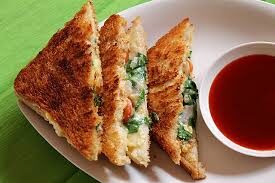
When money was tight during the Depression years, families learned to get creative with whatever they had. One such creation was the mashed potato sandwich, made by spreading mashed potatoes with onions and mayonnaise inside crusty French bread. It was cheap, filling, and surprisingly satisfying, especially when toasted until golden. Some called it a “starch bomb,” but for struggling families, it meant comfort and survival. This sandwich captured the spirit of ingenuity in hard times. People found ways to make familiar ingredients feel special again, proving that even the simplest meals can bring warmth to the table when shared with loved ones.
4. Popcorn Sandwich

The popcorn sandwich might sound like a joke, but in 1909, it appeared in cookbooks as a legitimate recipe. Toasted bread topped with buttered popcorn, sardines, and ketchup was promoted as a fun and affordable way to feed the family. It was crunchy, salty, and certainly messy, but it also represented an era that valued experimentation in the kitchen. Housewives tried to impress guests with novelty and creativity rather than flavor. While it quickly disappeared from dining tables, the popcorn sandwich remains a fascinating relic of how people turned humble snacks into conversation starters in their quest for culinary excitement.
5. Oyster Sandwich
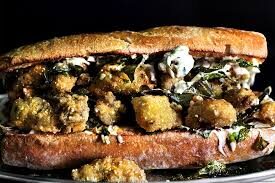
In the 1800s, oysters were cheap and abundant, making them a popular choice for working-class meals. The oyster sandwich, made with fried or stewed oysters on bread with lemon or hot sauce, was considered hearty and convenient. It was often sold on the streets of coastal cities, becoming the predecessor to the famous New Orleans po’boy. Over time, oysters became a delicacy, but the humble sandwich reminds us that luxury often starts as necessity. For many, it was the taste of the sea wrapped in simplicity, showing how good food doesn’t need to be fancy to be loved.
6. Olive and Nut Sandwich

Long before avocado toast or hummus wraps, there was the olive and nut sandwich. Popular at elegant luncheons in the early 1900s, it mixed minced olives with ground nuts and mayonnaise spread between slices of soft white bread. It was savory, textured, and considered refined. Women’s magazines described it as perfect for tea parties, offering both taste and sophistication. Though it might sound odd today, this recipe was an early example of mixing salty and earthy flavors to create something balanced. The olive and nut sandwich was proof that creativity and presentation could turn even the simplest ingredients into fashionable fare.
7. Prune Sandwich

Health and convenience collided in the early 20th century when prunes were hailed as a superfood. They were mashed or stewed and spread between slices of bread, sometimes combined with cream cheese for extra richness. It was soft, sweet, and easy to digest, making it ideal for children or the elderly. While not the most glamorous lunch, it filled bellies and offered nutrients when choices were limited. The prune sandwich might not have survived changing tastes, but it left behind a small legacy in the way we view functional food. It shows that even humble ingredients once held an air of innovation and care.
8. Pineapple and Mayo Sandwich

Sweet, tangy, and creamy, the pineapple and mayo sandwich became a Southern favorite during the Depression era. Canned pineapple was new, exotic, and affordable, while mayonnaise was shelf-stable and versatile. Combined on soft white bread, the result was an odd but refreshing balance that split opinions. Some found it delightful, others called it dreadful. Yet, for many, it was a taste of summer and nostalgia rolled into one. This sandwich shows how curiosity and convenience often guided the home cook’s hand, creating recipes that lingered in memory even after they left the table.
9. Celery Sandwich

Once upon a time, celery wasn’t just a snack; it was a status symbol. In the late 1800s and early 1900s, celery appeared on fancy tables, praised for its crisp freshness. The celery sandwich was a favorite at afternoon teas, made with finely chopped celery mixed into butter or cream cheese. Served cold and neatly trimmed, it represented refinement and restraint. Though modern eaters might shrug at its simplicity, it was considered sophisticated in its day. The celery sandwich reminds us that food trends come and go, but every era finds its own definition of elegance.
10. Date and Cheese Sandwich

At Edwardian tea rooms, dates mixed with soft cheese became a fashionable indulgence. The rich, sticky sweetness of dates paired beautifully with tangy cream cheese, creating a luxurious yet meatless treat. It was considered both elegant and nourishing, offering energy without heaviness. While it might seem unusual now, the combination still appears on cheese platters and appetizers, proving that good flavor pairings stand the test of time. The date and cheese sandwich reflected a period when even simple ingredients were elevated through care and creativity, showing that good taste often lies in contrasts rather than conformity.
11. Lettuce and Sugar Sandwich

For many children in the early 1900s, a lettuce and sugar sandwich was a small joy in lean times. With buttered bread, crisp lettuce, and a sprinkle of sugar, it offered sweetness and crunch when fruit or jam were luxuries. Parents made them to brighten their children’s lunches, and for many, the memory lingered long after better meals came along. It was a sandwich born from necessity and imagination, proof that love often looked like making something from nothing. The lettuce and sugar sandwich lives on as a gentle reminder of resilience wrapped in simplicity.
12. Asparagus Sandwich

In mid-century kitchens, canned vegetables were a mark of modernity, and asparagus sandwiches were a star of that era. Cold asparagus spears were placed neatly on buttered bread, often topped with mayonnaise or a dusting of paprika. They were served at bridge clubs, luncheons, and social gatherings, praised for being “elegant and convenient.” While the thought of limp canned asparagus might not excite modern appetites, it symbolized an age of innovation when homemakers proudly embraced ready-made ingredients. The asparagus sandwich now feels like a culinary relic, yet it once captured the spirit of modern homemaking with charm and confidence.
13. Peanut Butter and Onion Sandwich

Peanut butter and onion sandwiches were simple, affordable, and surprisingly common during the Depression years. Raw onion slices added sharpness to creamy peanut butter, making the sandwich flavorful and filling for laborers who needed fuel on a budget. It wasn’t about indulgence but about practicality. Families made do with what they had, and this odd pairing turned into a reliable staple. Though few would crave it today, it reflects how people once found comfort in combining the unexpected. The peanut butter and onion sandwich was not glamorous, but it was honest, and sometimes that was enough to keep spirits high.
14. Pickle and Whipped Cream Sandwich
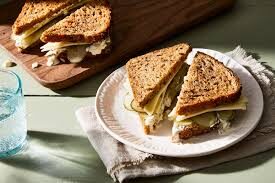
Of all the combinations to ever grace a tea table, few were as curious as the pickle and whipped cream sandwich. Finely chopped pickles were folded into whipped cream or mayonnaise to create a tangy, creamy filling. It was meant to be delicate and daring, served at luncheons as a novelty. The contrasting flavors were surprising but often polarizing. While most recipes of its kind vanished quickly, it represents an age when hosts loved to impress guests with originality. The pickle and whipped cream sandwich was less about taste and more about daring to be different in a polite society that prized creativity.
15. Creamed Corn Sandwich
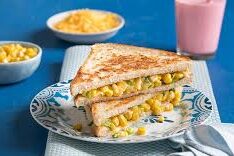
The creamed corn sandwich became a Depression-era favorite for families looking to stretch every meal. Warm or cold creamed corn was spooned between slices of bread, sometimes toasted for texture. It was cheap, sweet, and hearty, providing comfort in difficult times. While the idea sounds strange now, corn was abundant, and canned goods offered a sense of stability. The creamed corn sandwich filled stomachs and hearts alike. It spoke of perseverance, showing how even the humblest ingredients could offer hope and nourishment during uncertain days.
16. Grape Jelly and Sardine Sandwich

When cupboards were bare, resourcefulness ruled the kitchen. The grape jelly and sardine sandwich was one of those resourceful creations that combined protein and sweetness for sustenance. Mashed sardines mixed with jelly were spread on bread for a strange blend of flavors that somehow worked for some. Though it might sound unpleasant, it met the moment’s needs. It was affordable, filling, and nutritious when options were few. This odd pairing stands as a symbol of determination, showing how families learned to adapt, survive, and make every meal count when survival mattered more than taste.
17. Cabbage Sandwich

For working-class families, the cabbage sandwich was a crisp, no-fuss solution to hunger. Finely shredded cabbage mixed with vinegar or mayonnaise was spooned between slices of bread for a crunchy and refreshing bite. It resembled a basic coleslaw on bread and was incredibly cheap to prepare. Though plain, it satisfied when meat was scarce. The cabbage sandwich may have lacked glamour, but it embodied practicality and resilience. It showed that nourishment could be found in simplicity, proving that even a humble vegetable could carry a family through another day with dignity.
18. Cold Meat Jelly Sandwich (Aspic)
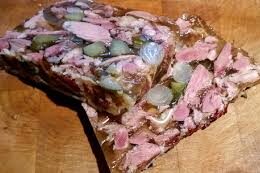
In the early 20th century, gelatin wasn’t just for desserts. Savory versions made from meat stock, known as aspic, were considered modern and chic. When spread on bread, they became glossy and savory sandwiches served at luncheons. The texture was slippery and odd, but it reflected the fascination with processed foods and convenience. Though the aspic sandwich disappeared with changing tastes, it remains a testament to an age of experimentation, when homemakers proudly embraced culinary trends that promised elegance and modernity, no matter how peculiar they looked or felt.
19. Cheese and Jelly Sandwich
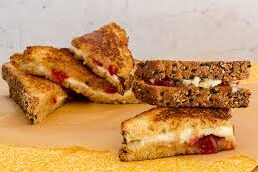
Some strange sandwiches actually stood the test of time, and the cheese and jelly sandwich is one of them. Sharp cheddar or American cheese paired with fruit jelly created a perfect balance of salty and sweet. It was popular in rural homes and lunchboxes across the country. People enjoyed the contrast, and it still appears today on cheese boards and grilled sandwiches. What started as a practical use of pantry staples evolved into a timeless combination. The cheese and jelly sandwich proves that even odd ideas can become lasting favorites when flavor finds harmony.
20. Liver Pate and Jam Sandwich

In Europe, liver pate and jam sandwiches were once seen as refined and sophisticated. The creamy, savory spread of liver paired with sweet jam created a rich combination that symbolized luxury. It appeared at dinners and afternoon teas, where guests appreciated its complex flavors. Although it feels outdated now, it reflected an era that valued indulgence and presentation. The pâté and jam sandwich reminds us that taste evolves with culture, and what seems unusual today might have once been the very definition of good taste.
21. Sardine and Mustard Sandwich
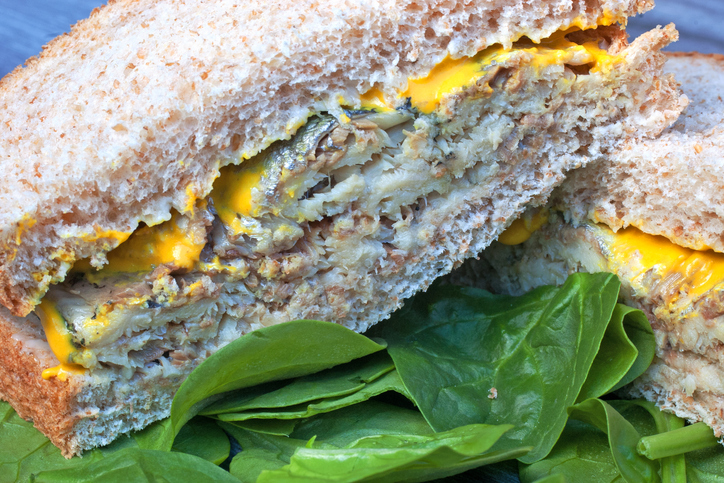
Cheap, filling, and nutritious, the sardine and mustard sandwich became a reliable favorite for sailors, factory workers, and anyone needing quick energy. The sharp tang of mustard balanced the strong flavor of sardines, making it both practical and satisfying. It was a simple solution in times when convenience mattered most. Although its popularity declined as tastes changed, it never truly disappeared. The sardine and mustard sandwich represents resourcefulness and the power of simple ingredients to sustain hardworking people through long days.
22. Olive and Cream Cheese Sandwich
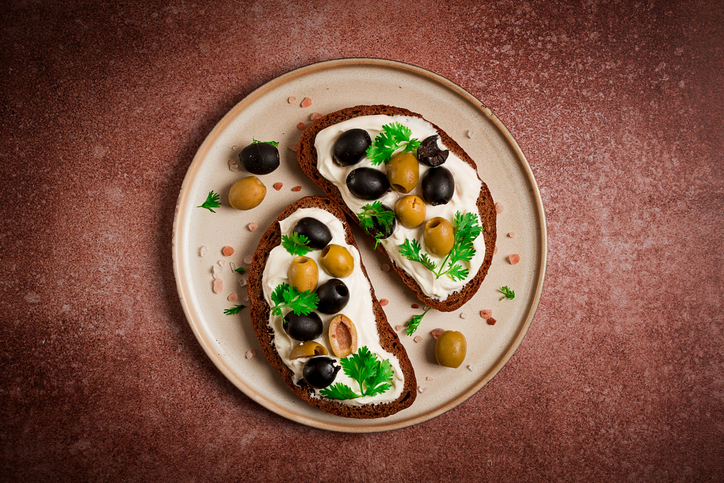
Popular in the early 1900s, the olive and cream cheese sandwich offered tangy flavor wrapped in softness. Chopped green olives were folded into whipped cream cheese and spread generously on white bread, then cut into small triangles for tea or social events. It was considered sophisticated, especially in the American South, where it became a staple at church gatherings. While it may feel old-fashioned now, many still enjoy it for nostalgia’s sake. The olive and cream cheese sandwich carries a quiet charm that endures through generations, reminding us that flavor often follows memory.
23. Peanut Butter and Vinegar Sandwich
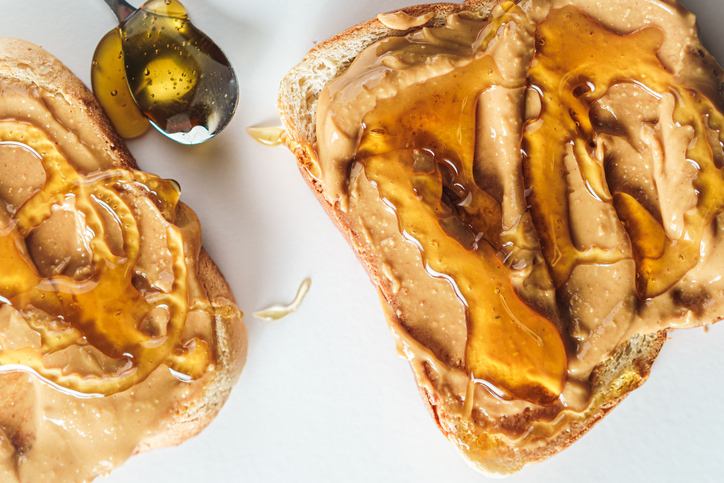
Depression-era cooks often found themselves improvising, and the peanut butter and vinegar sandwich was one of their thriftier creations. A small splash of vinegar was stirred into peanut butter to thin it out, giving it a tangy kick while helping it stretch further. It wasn’t fancy, but it added variety when choices were limited. This sandwich spoke of ingenuity, transforming necessity into something flavorful. Though it never became a trend, it represents the resilience of those who made the most of every jar and crumb, finding comfort in creativity and small victories.
24. Prune and Nut Sandwich

Combining sweetness with strength, the prune and nut sandwich aimed to nourish body and spirit alike. Mashed prunes were mixed with crushed nuts to form a rich, sticky filling often praised as healthy and energizing. It was a favorite among homemakers and schools for its affordability and nutritional value. While modern palates might find it heavy, it reflected a time when “wholesome” was the highest culinary compliment. The prune and nut sandwich is a story of practicality dressed as health, one that quietly fed generations through care and persistence.
25. Jelly Omelet Sandwich

One of history’s sweetest oddities, the jelly omelet sandwich blended breakfast and dessert in a single bite. Lightly cooked eggs folded with jam were placed between buttered slices of bread to create a protein-packed yet sugary meal. It appeared in late 19th-century cookbooks as a wholesome, economical dish. Families enjoyed it warm or cold, often packing it for lunches. While it sounds unusual today, it symbolized creativity and balance in frugal cooking. The jelly omelet sandwich shows that even the strangest recipes once had their place in kitchens filled with love and imagination.
From toast sandwiches to jelly-filled omelets, these forgotten creations reveal more than quirky recipes. They tell stories of resourcefulness, adaptation, and imagination in every era. Each sandwich reflects how people made do with what they had, turning necessity into nourishment. Maybe the next time you craft a snack, you’ll experiment with a twist of your own. After all, the weirdest ideas sometimes make the most memorable meals.
This story 25 Strange Sandwiches From History People Actually Ate (and Loved) was first published on Daily FETCH


